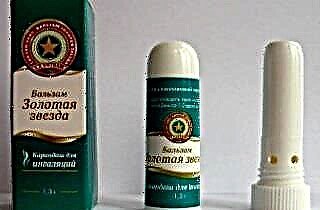Allergic rhinitis (hay fever) is an inflammation of the nasal cavity, accompanied by impaired nasal breathing, sneezing, lacrimation and hypersecretion of nasal mucus. The development of pathological processes is based on immediate allergic reactions. Contact with household chemicals, dust, animal hair, pollen, fungal spores, etc. can provoke undesirable reactions.
 Transparent nasal discharge, sneezing and lacrimation appear within a few minutes after contact with irritating substances. It is advisable to treat an allergic rhinitis when the first pathological symptoms appear. ENT disease responds well to therapy at the initial stages of development. To eliminate chronic and year-round rhinitis, patients are recommended to undergo allergen-specific immunotherapy. It aims to reduce the sensitivity (sensitization) of the body to certain antigens.
Transparent nasal discharge, sneezing and lacrimation appear within a few minutes after contact with irritating substances. It is advisable to treat an allergic rhinitis when the first pathological symptoms appear. ENT disease responds well to therapy at the initial stages of development. To eliminate chronic and year-round rhinitis, patients are recommended to undergo allergen-specific immunotherapy. It aims to reduce the sensitivity (sensitization) of the body to certain antigens.
About the disease
What is allergic rhinitis? The disease is characterized by non-infectious inflammation of the nasopharynx, which occurs as a reaction of the mucous membrane to the action of open and closed allergens. Open allergens include street dust, fungal spores, pollen, etc. Internal sources of allergic reactions are mold, animal dander, household chemicals and other irritants found in the premises.
Delayed treatment of allergies leads to the development of allergic conjunctivitis, otitis media and laryngitis.
Allergic snot significantly impairs health and negatively affects the quality of life. Due to constant nasal congestion, patients become lethargic, lethargic and irritable. Untimely treatment of the disease entails serious complications. Inflammatory processes can subsequently spread to the mucous membrane of the throat and larynx, as well as the auditory tube and nasolacrimal canal.
It should be understood that allergic rhinitis is an insidious and rather dangerous disease. If, during an exacerbation of the disease, contact with substances that are potentially capable of becoming an additional source of an allergic reaction is not limited, this will lead to an expansion of the spectrum of allergens for a particular patient. In this case, food (honey, citrus fruits, berries) and even cold air can become provocateurs of inflammation.
The mechanism of development of the disease
Allergy - what is it? Few people really understand what constitutes an allergic reaction. That is why patients sometimes cannot diagnose the disease in time and determine the source of the occurrence of undesirable processes in the nasopharynx.
Allergic rhinitis is a disease that occurs as a result of an inadequate response of the immune system to exposure to certain substances (allergens) and is accompanied by nasal congestion, watery eyes, and mucus from the nasal passages.
Pathological processes in the respiratory organs occur when the body reacts to certain foreign objects as "invaders". The immune system functions around the clock, protecting us from potentially dangerous microorganisms and substances - toxins, fungi, protozoa, viruses, microbes, etc. But due to the erroneous identification of some foreign bodies, she perceives them as harmful objects. In this regard, inflammation and allergic reactions occur in the body.
 How does an allergic rhinitis develop? At the initial contact with allergens, the immune system begins to "produce" special antibodies - IgE. They attach to the so-called mast cells or mast cells, which are located in the nasal cavity, conjunctiva of the eyes, lungs and some parts of the gastrointestinal tract. During the repeated meeting of the nasopharyngeal mucosa with allergens, mast cells are destroyed, as a result of which inflammatory mediators are released from them. In particular, atopic dermatitis, characterized by sneezing, burning in the nose, coughing and wheezing, results from the release of histamine from mast cells.
How does an allergic rhinitis develop? At the initial contact with allergens, the immune system begins to "produce" special antibodies - IgE. They attach to the so-called mast cells or mast cells, which are located in the nasal cavity, conjunctiva of the eyes, lungs and some parts of the gastrointestinal tract. During the repeated meeting of the nasopharyngeal mucosa with allergens, mast cells are destroyed, as a result of which inflammatory mediators are released from them. In particular, atopic dermatitis, characterized by sneezing, burning in the nose, coughing and wheezing, results from the release of histamine from mast cells.
There are many different antibodies that cause hay fever. Each of them is associated with a specific irritant, i.e. allergen. This is why some people are allergic to animal hair, while others are allergic to pollen, etc.
If at least one of the parents suffers from allergies, the likelihood of developing the same disease in a child will average 65-75%.
Forms of rhinitis
Often, allergic rhinitis develops within 2-3 minutes after contact of the nasopharyngeal mucosa with irritating substances. There is a conditional classification of an allergic disease, which is determined by the causes of the development of allergies and the duration of the course of inflammatory processes:
- seasonal (intermittent) allergic rhinitis - manifests itself in the spring-autumn period of flowering trees and some plants; most often the allergens are wind-pollinated trees, cereals and composites - alder, birch, wheat, rye, sorrel, nettle, etc .;
- year-round (persistent) allergic rhinitis - a chronic disease, the symptoms of which appear throughout the year; library dust, food, fungus, feathers and wool can become provocateurs of inflammation in the nasopharynx.
As a rule, acute allergic rhinitis disturbs patients no more than 3-4 weeks a year, while year-round allergies can worsen almost every month. Usually, seasonal allergy in winter does not manifest itself in any way, however, in spring and summer, patients feel a significant deterioration in their health. To prevent relapses of ENT diseases, doctors recommend strictly observing preventive measures during the periods of flowering plants.
Causes of seasonal allergic rhinitis
Hay fever occurs exclusively during periods of intense airborne transport of spores and pollen. All allergens that enter the nasal mucosa through the air are called aeroallergens. The most common cause of allergic rhinitis is:
- pollen of trees - poplar, hazel, alder, birch, oak;
- herbs - sorrel, hemp, coltsfoot, nettle, plantain, quinoa;
- spores of fungi - moldy, yeast-like.
The characteristic symptoms of the disease appear mainly in late March, early May, June and late September. If it was not possible to avoid contact with allergens, you need to try to stop the manifestations of the disease in the very rudiment. For this, special antiallergic nasal drops and antihistamines can be used. If the manifestations of hay fever are not eliminated in time, this can subsequently cause the development of cross-allergic reactions.
Causes of perennial allergic rhinitis

The causes of persistent allergic rhinitis lie in the influence of a fairly wide range of allergens. Most often, the symptoms of ENT disease are exacerbated 2-3 times a month throughout the year. The most common provoking factors for the development of rhinitis include:
- house dust;
- dandruff of animals;
- medications;
- decorative cosmetics;
- household chemicals;
- Food.
Even short-term contact with irritating substances often causes an exacerbation of the disease. People with year-round fever are advised not to have cats, dogs and birds. Why? The fact is that malfunctions of the immune system can "progress".Failure to restrict contact with potentially allergic objects during an exacerbation of hay fever can lead to cross-allergic reactions.
Preventive actions
 Unfortunately, the specific prevention of allergic rhinitis has not yet been developed. In many ways, the nature of preventive measures depends on the type of hay fever and the allergen that provokes its development. Patients suffering from intermittent rhinitis are advised to:
Unfortunately, the specific prevention of allergic rhinitis has not yet been developed. In many ways, the nature of preventive measures depends on the type of hay fever and the allergen that provokes its development. Patients suffering from intermittent rhinitis are advised to:
- refrain from walking the streets during the flowering period of trees and grasses;
- ventilate the room only in the absence of wind or immediately after rain;
- before opening the windows, hang them with wet sheets, which will restrain the penetration of plant pollen into the room;
- change outerwear immediately after walking down the street;
- take a shower and wash your hair at least 2 times a day during the flowering period of plants;
- after washing, dry things not on an open balcony, but indoors;
- do wet cleaning in the house every day;
- use air conditioners with filters and humidifiers.
In case of food allergies, it is advisable to exclude foods with a high degree of allergenicity from the diet. These include:
- eggplant;
- tomatoes;
- citrus;
- apricots;
- grape;
- Garnet;
- berries;
- watermelons;
- carrot;
- kefir;
- honey, etc.
Patients with dust allergies are advised to leave the house in the afternoon. During this period, the concentration of dust particles in the air is significantly reduced, which reduces the likelihood of an exacerbation of the disease. If for some reason it is impossible to prevent going outside in the morning hours, it is advisable to use a damp gauze bandage or respirator.



